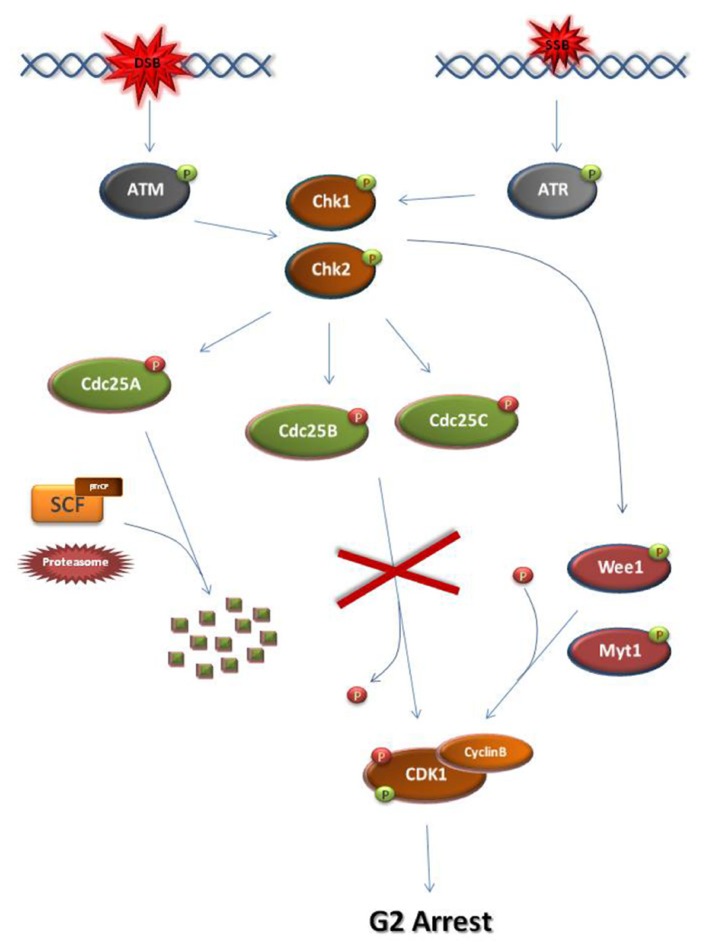FIGURE 2.
Schematic representation of the major steps of the G2 DNA damage checkpoint. At S/G2 phase, DSBs and SSBs activate ATM and ATR, respectively. As a consequence, checkpoint kinases Chk1 and Chk2 become activated. Chk1 and Chk2 can directly phosphorylate and activate Wee1 or Myt1 kinases. Wee1/Myt1 impose inhibitory phosphorylations on the M-phase kinase Cyclin B-CDK1 in order to block M-phase entry. At the same time, the checkpoint kinases directly phosphorylate and inhibit Cdc25 phosphatases. Unlike the inhibitory phosphorylations of Cdc25B and Cdc25C, checkpoint kinase-dependent phosphorylation of Cdc25A allows its recognition by the SCF/βTrCP ligase. Subsequent ubiquitination of Cdc25A renders the phosphatase a substrate for the proteasome leading to its degradation. As a result of their inhibition, the Cdc25 phosphatases cannot remove the inhibitory phosphate from CDK1. Consequently, the cell cycle arrests at G2 due to inhibition of CDK1 activation. The activating CDK1 phosphorylation is introduced by CDK-activating kinases but is masked by the Wee1/Myt1 inhibitory phosphorylations.  activating phosphate.
activating phosphate.  inhibiting phosphate.
inhibiting phosphate.

